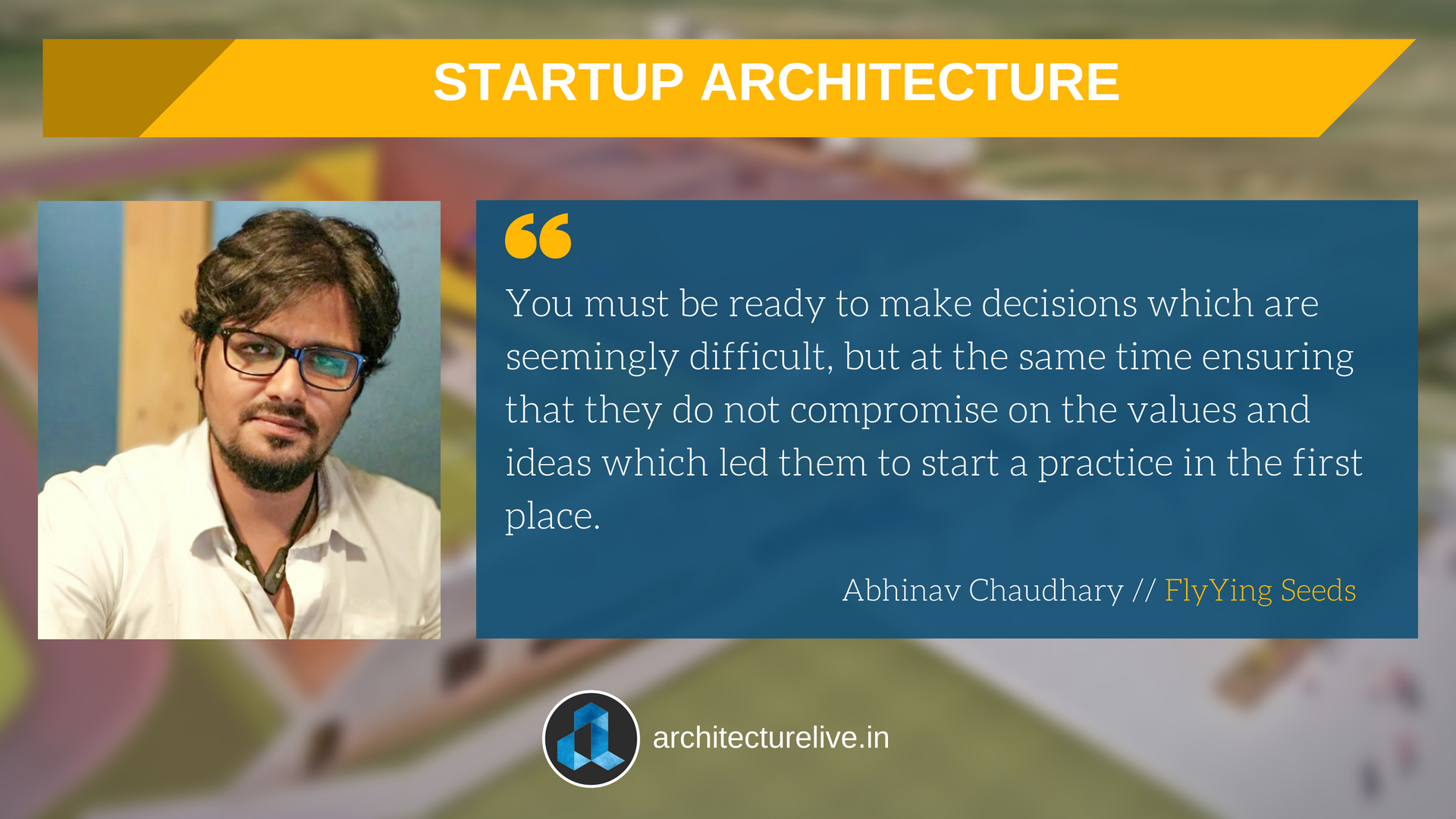“In order to succeed, your desire for success should be greater than your fear of failure” – Bill Cosby
Today, we have Abhinav Chaudhary, principal architect of flYing Seeds Studio, New Delhi, weighing in on the opportunities and challenges of starting your practice.

Having started his practice in 2015, Abhinav shares insights from his day-to-day understanding of running his firm. flYingseeds aspires to be a pragmatic practice which currently handles versatile architectural and interior projects in residential, commercial, retail, institutional and hospitality projects.
Although a seemingly young firm, they have designed award-winning projects of different scales. The firm developed from the notion of the invention, which was later transformed into a philosophy for his practice. Abhinav says he never had a concise idea of when he would start his practice, but he always knew he wanted to.
Abhinav Chaudhary:
There is no specific time to start your practice. Whenever one believes that it is the right time to test their waters, that’s when it is.
For some, it (establishing private practice) is right after they graduate from College. For others, even ten years of experience is not enough to find the right reasons to start your practice. Either way, focusing on developing and nurturing our interests and evolving as an architect should be the primary goal.
Abhinav Chaudhary
Starting your practice demands one to expand their expertise beyond their designing skill set. Not every architect would be adept or necessarily want to run a business – for those, there are other viable opportunities to grow and develop as an architect.
One should only start their practice if they want to handle the distinct but crucial aspects of running a firm and if for them, despite the adversities – starting on their own seems the best outlet to define their creative stance.
Currently, I have Kakoli Bhattacharya as a partner in our firm and a group of architects to work with, but initially, when I started, it was with just one intern.
I believe no design is as challenging as an architect trying to make it for himself. One has to be able to take up each challenge, irrespective of the scenarios influencing it. If someone can readily make that decision, they are ready to start their practice. That is the key to entrepreneurship.
Abhinav Chaudhary
You must be ready to make seemingly difficult decisions, but at the same time, ensure that they do not compromise on the values and ideas which led them to start a practice in the first place. My advice to fellow aspirants would be – to know why you want to start this, as it initially pertains to a lot of compromises and ordeals.
Abhinav Chaudhary
We must identify and create solutions and deal with challenges creatively. As a firm, you constantly have to research, experiment, learn and innovate. At times, the learnings can even come from your failures.
Abhinav believes that to be able to adequately handle the adversities that come with starting out, you must believe in yourself and your designs –
More often than not, convincing the client that your designs are worth their salt becomes the greatest challenge; you have to believe in what you are designing to resonate that belief in your client. Initially, obtaining projects is a challenge.
Abhinav Chaudhary
In the initial stages, one often requires guidance regarding logistics or certain regulations- sometimes, it could also be regarding an aspect of the project.
Abhinav believes that the only way to grow as an architect is by constantly learning. “You realize that if wanting to learn, scenarios and people have a lot to teach you. We should always be open to seeking help and sharing our learning with the fraternity. Though most trepidations get solved internally, I have realized that it is not necessarily experienced architects that we can learn from- we have often received brilliant ideas and solutions from my junior colleagues, consultants and contractors.
Reliance on consultants is essential since we, as a practice though striving for excellence, cannot possibly excel at everything. There is a continual advent of materials, construction techniques and technology that can be adapted to a project, so one always has to keep learning to keep up.
Abhinav Chaudhary
Realistically, there are high stakes in starting your practice. You must adapt to leadership roles, understand the market demands, develop an understanding of how to convince clients and, most importantly, how to handle the finances, not just for earning but more importantly for sustaining your practice.
It is easy to change trajectory once you run your practice. Thus, one has to understand that it demands more than a clear vision for architecture and design. It is a risky proposition, and everyone may not be well suited for it. A lot depends on your tolerance and ability to handle and adapt to risks.
On this, he articulates that the most important thing is to do what you love, irrespective of the challenges and risks that come with it. He says. “At first, we need to find where our passion lies- when we do what we love to do, we tend to thrive. Understand why you want to do what you want to do. Starting your practice is beyond your personal growth and aspirations- it is for your contribution to society as a larger picture through architecture.”
He succinctly concludes, “It is the journey of designing, resolving and accepting challenges with humility. A prospect which demands constant learning and a quest for adventure. To achieve big, you need to be prepared to handle the challenges that come along.”






